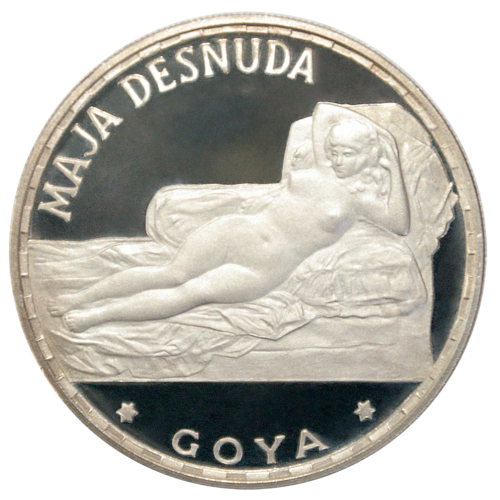W009
Proof, .999 Silver
38mm (1-1/2”), 32 grams
HISTORY: On October 12, 1968, the region of the Republic of Equatorial Guinea conceded independence from Spain. Francisco Macías Nguema (1924‒1979) was elected president. On Christmas Eve in 1969, he had 150 alleged coup plotters executed. In July 1970, he created a single-party state.
OBVERSE: “REP. DE GUINEA EQUATORIAL” encircles the upper half of this coin, with two elephant tusks crossed in the center. Above is the country’s coat of arms, showing six stars, a silk cotton tree, and a ribbon below, citing “UNIDAD, PAZ, JUSTICIA” (Unity, Peace, Justice). Beneath the tusks is the denomination “100 PESETAS GUINEANAS.” To the left and right of the tusks are written “LEY 999.9” (.999% silver) and the date “1970.” To the left of the forward tusk is a small oval with the number “1000” in its center, which is the total coins minted.
REVERSE: It is interesting that, two years after gaining independence from Spanish colonialism, Equatorial Guinea would feature the world-famous La Maja Desnuda on this 1970 coin. The artist, Francisco José de Goya (1746–1828), painted this in late 1790, commissioned by Manuel de Godoy (1767–1851), a former prime minister of Spain. “Maja” generally refers to the lower class of Spanish society.



